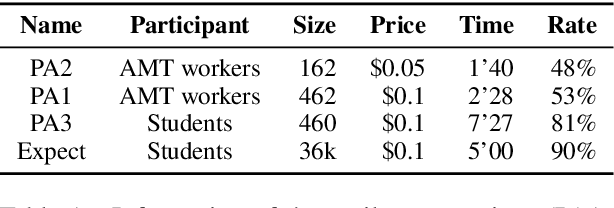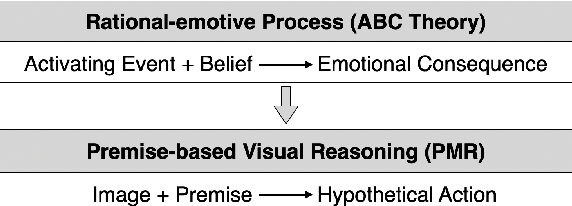Ziwei Qin
Denoising Bottleneck with Mutual Information Maximization for Video Multimodal Fusion
May 25, 2023



Abstract:Video multimodal fusion aims to integrate multimodal signals in videos, such as visual, audio and text, to make a complementary prediction with multiple modalities contents. However, unlike other image-text multimodal tasks, video has longer multimodal sequences with more redundancy and noise in both visual and audio modalities. Prior denoising methods like forget gate are coarse in the granularity of noise filtering. They often suppress the redundant and noisy information at the risk of losing critical information. Therefore, we propose a denoising bottleneck fusion (DBF) model for fine-grained video multimodal fusion. On the one hand, we employ a bottleneck mechanism to filter out noise and redundancy with a restrained receptive field. On the other hand, we use a mutual information maximization module to regulate the filter-out module to preserve key information within different modalities. Our DBF model achieves significant improvement over current state-of-the-art baselines on multiple benchmarks covering multimodal sentiment analysis and multimodal summarization tasks. It proves that our model can effectively capture salient features from noisy and redundant video, audio, and text inputs. The code for this paper is publicly available at https://github.com/WSXRHFG/DBF.
ImageNetVC: Zero-Shot Visual Commonsense Evaluation on 1000 ImageNet Categories
May 24, 2023



Abstract:Recently, Pretrained Language Models (PLMs) have been serving as general-purpose interfaces, posing a significant demand for comprehensive visual knowledge. However, it remains unclear how well current PLMs and their visually augmented counterparts (VaLMs) can master visual commonsense knowledge. To investigate this, we propose ImageNetVC, a fine-grained, human-annotated dataset specifically designed for zero-shot visual commonsense evaluation across 1,000 ImageNet categories. Utilizing ImageNetVC, we delve into the fundamental visual commonsense knowledge of both unimodal PLMs and VaLMs, uncovering the scaling law and the influence of the backbone model on VaLMs. Furthermore, we investigate the factors affecting the visual commonsense knowledge of large-scale models, providing insights into the development of language models enriched with visual commonsense knowledge. Our code and dataset are available at https://github.com/hemingkx/ImageNetVC.
Premise-based Multimodal Reasoning: A Human-like Cognitive Process
May 15, 2021



Abstract:Reasoning is one of the major challenges of Human-like AI and has recently attracted intensive attention from natural language processing (NLP) researchers. However, cross-modal reasoning needs further research. For cross-modal reasoning, we observe that most methods fall into shallow feature matching without in-depth human-like reasoning.The reason lies in that existing cross-modal tasks directly ask questions for a image. However, human reasoning in real scenes is often made under specific background information, a process that is studied by the ABC theory in social psychology. We propose a shared task named "Premise-based Multimodal Reasoning" (PMR), which requires participating models to reason after establishing a profound understanding of background information. We believe that the proposed PMR would contribute to and help shed a light on human-like in-depth reasoning.
 Add to Chrome
Add to Chrome Add to Firefox
Add to Firefox Add to Edge
Add to Edge